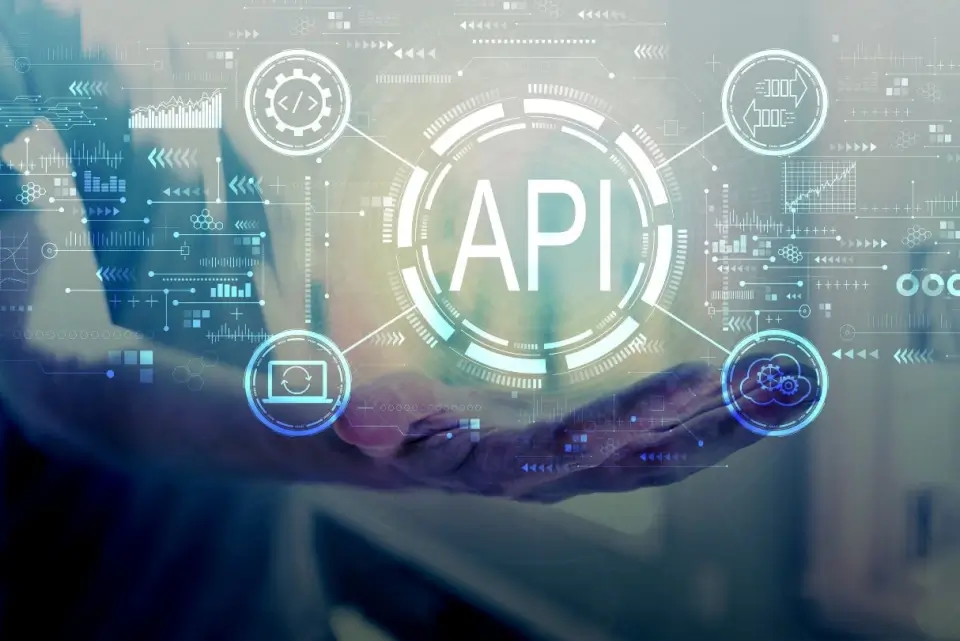APIs allow different software applications to communicate with each other, facilitating data transmission and functionality. However, the rise in API usage has also led to an increase in API vulnerabilities and breaches. Recent years have seen a surge in API-related cyber attacks and data breaches, causing severe reputational and financial losses for businesses. These incidents highlight the growing need for robust API security measures.
This post provides a comprehensive guide to one crucial aspect of API security – API penetration testing. API penetration testing simulates attacks to detect vulnerabilities in APIs before they can be exploited. By proactively finding and patching security flaws, businesses can harden their APIs and prevent data breaches. This guide will cover the fundamentals of API penetration testing, including preparations, steps involved, common vulnerabilities, reporting, and remediation. It aims to help readers understand the importance of API security and how to leverage penetration testing to minimize the API attack surface and strengthen defenses.
Why Do We Need API Security?
APIs (application programming interfaces) allow different software applications to communicate with each other by exposing functions and data. APIs provide a standardized way for applications to integrate and share information seamlessly. The adoption of APIs has skyrocketed in recent years, powering everything from mobile apps to enterprise systems.
However, the extensive usage of APIs also presents significant security risks. APIs act as gateways into backend systems and data stores. Any vulnerabilities in APIs can be exploited by attackers to breach sensitive data or perform unauthorized actions. Weak API security has led to many high-profile data leaks and security incidents. In 2022, a flawed T-Mobile API exposed customer data such as phone numbers, call records and SMS texts. In another incident, over 533 million Facebook users had their data scraped and leaked via a vulnerable Facebook API.
Clearly, robust API security is critical for safeguarding user data and maintaining trust in online services. Unprotected APIs allow attackers easy access to steal information, inject malware, or take control of entire systems. As organizations increasingly open APIs to partners and the public, they need to prioritize API security to prevent security lapses that can damage reputation, finances, and customer confidence. Proactive measures like penetration testing are essential for finding and resolving API vulnerabilities before criminals can detect and abuse them.
API Penetration Testing Overview
API penetration testing (API pentesting), is a specialized form of security testing focused on finding vulnerabilities in APIs. It involves simulating malicious attacks on APIs and attempting to circumvent their security controls. The goal is to discover flaws like code injections, broken authentication, and other weaknesses that could enable data and functionality abuse.
Well-designed API penetration tests assess the API itself, related source code, backend connections, and all integrated components. By taking an attacker’s viewpoint, API pentests identify security gaps before they are exploited. This allows organizations to address issues proactively via patching and improvements. Robust API penetration testing is invaluable for bolstering defenses and preventing data breaches.
Key benefits of API pentesting include:
- Finding unknown vulnerabilities that static analysis misses
- Checking how the API performs under attack conditions
- Testing authentication and authorization controls
- Assessing the effectiveness of rate limiting and request throttling
- Validating input sanitization and output encoding
- Detecting business logic flaws and risk exposures
API penetration testing differs from generic API testing, which focuses on functionality, performance, and reliability. API pentests employ techniques like fuzzing, encryption analysis, and brute force attacks specifically to uncover security weaknesses. The results help organizations improve API security posture and withstand malicious hacking attempts.
Preparing for and API Pentest
Thorough preparation is crucial for an effective API penetration test. Companies should ensure the penetration testers have the required documentation, permissions, and objectives before commencing.
Clear scoping helps focus testing on the most critical APIs and endpoints. The scope should outline which APIs, use cases, data types, and access levels to cover. Setting concrete objectives for vulnerability discovery, security gaps to assess, and types of attacks to simulate will maximize test value.
Providing API documentation helps penetration testers better understand the expected functionality, workflows, and data processing. This enables detecting flaws like incorrect API behavior or violation of documented limits. Documentation also aids in exploring edge cases.
Finally, confirming appropriate access permissions is vital. Pentesters require all privileges an external attacker may gain, including anonymous access if allowed. Ensuring the pentesters can leverage all valid user roles helps assess authorization controls. Smooth API access and visibility into errors enable better testing. With the right access and scope, testers can provide more actionable results.
Proper pre-test preparations optimize the testing process and output. Defining objectives, providing documentation, and setting up access ultimately help discover more security issues and enhance API protection.
Conducting API PenTesting
A thorough API penetration test involves multiple phases, including reconnaissance, discovery, enumeration, vulnerability assessment, and reporting.
Reconnaissance gathers public information about the target APIs through searches, whois lookups, and reviewing documentation. This maps the attack surface and informs planning.
Discovery identifies all available API endpoints, methods, and data inputs. Tools like Postman, curl, and Burp Suite proxy can find hidden APIs missed in reconnaissance.
Enumeration probes each endpoint and parameter to extract available data. Testers perform authentication bypass, analyze error messages, and assess rate limiting.
With sufficient mapping of the API functionality, testers can identify vulnerabilities by manipulating inputs, exploring edge cases, and intentionally inducing failures. Common techniques include SQL injection, cross-site scripting payloads, brute force attacks, and tampering with object IDs or tokens to elevate privileges.
Tools like Nmap, sqlmap, and OWASP ZAP facilitate vulnerability probing. Burp intruder helps automate tests with sophisticated payloads. The static and dynamic analysis uncovers code flaws and misconfigurations. Inputting malformed data can reveal validation and sanitization issues.
Penetration testing requires both automated tools and manual, creative testing based on professional expertise. Combining these approaches leads to the most effective vulnerability coverage.
Common API Vulnerabilities
APIs are prone to many different vulnerabilities that allow attackers to obtain sensitive data or control backend applications. Some of the most prevalent API security flaws include:
- SQL Injection – inserting malicious SQL code in API requests to access or manipulate databases. The Equifax breach in 2017 was enabled by an unprotected API vulnerable to SQLi.
- Broken Authentication – flaws in authenticating users or validating tokens/session IDs. APIs often rely on JWT tokens which could be compromised.
- Data Exposure – information leakage via flawed data filtering or lack of access controls. In 2022, Clubhouse had a bug exposing user profile data via its API.
- Business Logic Abuse – attackers can manipulate application workflows by exploiting flawed business logic in APIs. Financial APIs are a key target.
- Rate Limit Bypass – APIs often limit requests to prevent denial of service attacks but can still be abused by slowly generating traffic or spoofing metadata like IP address or device ID.
- CORS Misconfiguration – if CORS policies are too permissive, attackers can make unauthorized cross-origin requests to APIs leaking information.
- Injection Attacks – lack of input sanitization makes the API vulnerable to code injection, local file include, or OS commands via the API.
- Insufficient Logging & Monitoring – inability to detect, alert, and respond to attacks in progress due to poor API logs and tracking.
Organizations need to be aware of these API threat patterns and rigorously test their own APIs to identify and rectify such weaknesses.
Best Practices for API Security
Robust API security requires implementing comprehensive safeguards along with ongoing diligence. Here are some key best practices:
- Perform rigorous penetration testing on APIs at least annually, plus whenever adding new features or endpoints. Continuous security testing is crucial for identifying vulnerabilities before criminals do.
- Implement OAuth 2.0 or OpenID Connect for API authorization instead of custom auth code. Use standards like JWT with signatures to protect tokens.
- Enforce protocol-level protections including TLS 1.2+ encryption, certificate pinning, and access over VPNs to secure API communication channels.
- Sanitize all inputs from users and integrate output encoding to prevent XSS, SQLi, and other injection risks.
- Implement rate-limiting protections against DDoS attacks by restricting requests per user, IP address, and other parameters.
- Maintain detailed API logs with monitoring and alerts to detect misuse in real time. Integrate web application firewalls as an added layer of protection.
- Restrict CORS access to APIs via whitelisting origins and setting appropriate headers. Disable CORS on sensitive APIs.
- Adhere to security and privacy regulations applicable to the data accessible via APIs. Conduct risk assessments and audits to ensure regulatory compliance.
By proactively applying these measures, organizations can harden their APIs against attacks and avoid devastating data breaches. Robust API security foundations combined with continuous testing and monitoring provide multilayered protection for business-critical assets.
Frequently Asked Questions
What are some common vulnerabilities found in API penetration testing?
SQL injection, broken authentication, sensitive data exposure, CORS misconfiguration, business logic abuse, insufficient logging, and monitoring are some of the most common API vulnerabilities uncovered during penetration testing.
Should authorization mechanisms like OAuth be tested in an API pentest?
Absolutely. API pentests should thoroughly test authorization controls like OAuth and object level authorization to ensure various access levels and user roles function securely as expected.
Can penetration testing tools like Burp Suite be used for testing web service APIs?
Yes, tools like Burp Suite are very effective for API penetration tests as they allow in-depth API analysis, automated vulnerability probing, manipulating requests, and Inspector analysis of responses.
Is on-premise infrastructure also tested in an API penetration test?
API penetration testing focuses on the API itself, but can also cover on-premise components like servers and databases that connect to the API if they are in scope.
Can API penetration testing help meet compliance requirements?
Yes, API testing identifies vulnerabilities that could result in data breaches. Fixing these flaws proactively helps comply with regulations like GDPR that emphasize security protections for personal data.









